Straightening of Cervical Lordosis: Causes, Symptoms, and Treatments
Normal neck curve? All of us, at one time or another, have probably been told to stand or sit up straight. The primary structure that allows us to follow wise advice and demonstrate good posture is our spine. Likewise, when our posture is poor, this puts strain and pressure on the spine and supporting structures and can create problems down the road.
This emphasis on a straight posture may, understandably, make you envision your spine, which stretches from the base of your skull down to your pelvis, as straight. However, if you could stand sideways in front of a mirror and see all the way through to the spine, a normal spine would have three gentle counterbalancing curves.
If there is too much curve at any point or not enough, this can be a problem. In this article we’ll discuss the straightening of that normal neck curve, or, using the medical terminology in case you see it on your X-ray, the straightening of the normal cervical lordosis.
What Is Cervical Lordosis or Natural Neck Curve?
Cervical lordosis, a term that might sound complex, is actually a fundamental aspect of your spinal health. This natural curve in your neck plays a crucial role in how you hold your head, maintain your posture, and go about your daily activities.
In this detailed exploration, we’ll delve into what cervical lordosis is, the normal curvature of the cervical spine, and its indispensable role in supporting the head and neck.
Cervical Lordosis: A Closer Look
Before we dive into the specifics, let’s understand the broader context. The human spine is a remarkable structure, composed of a series of vertebrae that stretch from the base of the skull to the tailbone. It’s not just a rigid column but a complex structure with several curves, which are essential for balance, flexibility, and absorbing shock.
Anatomy of the Cervical Spine
The cervical spine, comprising the uppermost part of the spinal column, consists of seven vertebrae (C1-C7). It starts right below the skull and extends down to the thoracic spine. This region is known for its flexibility, allowing for a wide range of head movements.
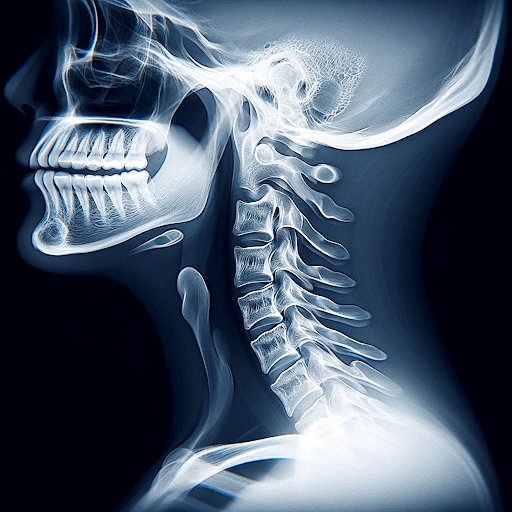
What Exactly Is Cervical Lordosis?
Cervical lordosis refers to the inward curve of the cervical spine. This curvature is vital as it helps in balancing the head and neck over the shoulders, ensuring optimal distribution of weight and stress.
The Ideal Curve: What’s Normal?
A healthy cervical spine typically presents a gentle arc, with the convexity pointing towards the back of the neck. This curvature is often described in degrees, with the normal range being about 20-40 degrees. However, it’s important to note that ‘normal’ can vary from person to person.
The Role of Cervical Lordosis in Spinal Health
Cervical lordosis isn’t just about anatomy; it’s about functionality. This curvature plays a pivotal role in our daily lives.
- Supporting the Head and Neck
The most apparent function of cervical lordosis is supporting the head. The human head weighs about 10-12 pounds, and the cervical curve helps in evenly distributing this weight along the spine. - Shock Absorption
Another critical function is shock absorption. When you walk, run, or jump, your spine absorbs the impacts. The curves, including cervical lordosis, act like a spring, cushioning these forces. - Facilitating Movement
The curvature allows for fluid and flexible movement of the head and neck. This range of motion is crucial for everyday activities like nodding and turning your head. - Maintaining Balance
Cervical lordosis plays a role in maintaining the overall balance of the body. It aligns the head with the spine, contributing to a balanced and upright posture.
When Cervical Lordosis Becomes a Concern
While cervical lordosis is normal, variations can lead to issues.
Hypo-lordosis and Hyper-lordosis
Too little curve (hypo-lordosis) or too much curve (hyper-lordosis) can lead to problems. These conditions can result from various factors, including poor posture, spinal injuries, or congenital spinal conditions.
Impact on Health
Abnormal curvature can lead to neck pain, stiffness, and in severe cases, nerve compression. It can also affect overall posture and spinal health.
Is Straightening of the Cervical Spine Dangerous?
If you have lost this normal curve in your neck, you may be experiencing regular neck and/or head pain and perhaps even the feeling that your head is too heavy for your neck.
Why? It’s because the cervical spine can no longer adequately support the weight of your head, which requires a counterbalance between the cervical curve (lordosis) and thoracic curve (kyphosis). This causes your muscles to pick up the slack to balance your head. However, this isn’t the job that those muscles are intended to do, so the added stress on the muscles creates neck and head pain.
Straightening in the cervical spine can also cause biomechanical problems, put pressure on other areas of the spine, and eventually lead to degenerated discs as it causes added weight to be placed on the discs.
Research on the straightening of cervical lordosis has also shown that it may disrupt the flow of blood into certain areas of the brain as blood travels through vessels that must pass through holes in the cervical bones.
Symptoms of Loss of Cervical Lordosis
Cervical lordosis refers to the natural inward curve of the cervical spine (neck region). When this curve is reduced or straightened, it is often termed “loss of cervical lordosis” or “straightened cervical lordosis.” This altered spinal alignment can arise from various causes, including poor posture, muscle strain, trauma, congenital anomalies, degenerative changes, or other spinal conditions.
If you have straightened cervical lordosis, you might experience the following symptoms:
- Neck pain: This is the most common symptom. The pain might be dull or sharp, and it can range from mild to severe. It may be constant or intermittent.
- Stiffness: The neck might feel tight and less flexible, making it difficult to move or turn the head.
- Headaches: Tension-type headaches or occipital neuralgia might occur, especially at the base of the skull.
- Muscle spasms: The muscles in the neck may frequently spasm or feel tense, leading to further discomfort.
- Numbness or tingling: Altered cervical alignment can lead to nerve compression, causing sensations like numbness, tingling, or even weakness in the arms.
- Decreased range of motion: Turning the head side-to-side or tilting it up and down might be limited.
- Shoulder pain: Pain may radiate or refer to the shoulder areas.
- Radiating pain: In some cases, pain can radiate down to the arms and hands, a symptom commonly referred to as radiculopathy.
- Postural changes: Individuals might notice a forward head posture, where the head is positioned more forward relative to the shoulders.
- Fatigue: Continuous pain or discomfort can lead to fatigue or general tiredness.
- Vertigo or dizziness: Though less common, some individuals may experience vertigo or dizziness related to neck issues.
- Difficulty swallowing or breathing: In extreme cases, if there is significant compression or changes in the structure, there might be difficulties in swallowing or breathing. This is rare but can be a sign of a more serious condition.
- Visual disturbances: In rare cases, altered cervical alignment can lead to visual symptoms.
What Causes the Straightening of the Normal Cervical Lordosis?
While traumatic injuries to the neck (e.g. a car accident) may be a direct cause of the straightening of the neck curve, other issues may also straighten the cervical spine over time. In our modern technology-centered world today, the constant strain of hunching over our devices can take a toll on our necks, shoulders, and backs.
Another cause of cervical straightening could be a sedentary lifestyle. If you come home from work each day and spend the rest of the evening sitting, you are more likely to develop cervical straightening. Especially if you start noticing tightness in your chest wall or hips as you sit, this can be a sign that you’re putting strain on your cervical spine.
The entire spine, as well as the entire body, is an interconnected machine, and stress in one area of the spine, for example, can create problems anywhere along the spinal chain as other areas attempt to compensate for the stress.
The normal process of aging can also create problems with the curve in the spine, so regular spine maintenance is important as you reach middle age and beyond.
Comprehensive Treatment Strategies
The journey to treat straightened cervical lordosis involves a combination of therapeutic approaches, lifestyle adjustments, and in some cases, medical interventions.
- Physical Therapy: Restoring Natural Curvature
Physical therapy stands as a cornerstone in treating this condition. Therapists use various techniques like stretching, strengthening exercises, and posture correction to gradually restore the spine’s natural curve. - Chiropractic Care: Hands-On Approach
Chiropractic adjustments can be particularly beneficial. Chiropractors use hands-on spinal manipulation to improve spinal motion and enhance the body’s physical function. Over the years we have found excellent evidence-based chiropractors who focus on curve restoration.
These specialized chiros practice what is known as “chiropractic biophysics.” - Ergonomic Adjustments: Promoting Healthy Posture
Ergonomic changes, especially for those spending long hours at a desk, can significantly help. Proper chair support, screen height adjustments, and posture-awareness tools play a vital role. - Medications: Managing Pain and Inflammation
In some cases, medications may be prescribed to manage pain and inflammation associated with straightened cervical lordosis. This includes over-the-counter pain relievers and anti-inflammatory drugs. - Surgical Intervention: A Last Resort
Surgery is considered only in severe cases where non-invasive treatments fail. Procedures may vary depending on the underlying cause and extent of the condition.
Here are some surgical intervention options for straightening cervical lordosis:
- Cervical fusion: This involves joining two or more vertebrae using bone grafts to eliminate motion between them.
- Cervical osteotomy: In this procedure, the surgeon makes a cut in the spine to realign it into a more natural position.
- Artificial disc replacement: Instead of fusing vertebrae together, an artificial disc is inserted between the affected vertebrae to maintain motion in the spine.
Alternative therapies like acupuncture, yoga, and massage therapy can complement traditional treatments, offering holistic benefits and aiding in pain management.
Customizing Treatment to Individua l Needs
It’s crucial to note that treatment for straightened cervical lordosis should be tailored to the individual’s specific condition, symptoms, and overall health profile.
Consultation with Healthcare Professionals
Consulting with healthcare professionals, including orthopedists, chiropractors, and physical therapists, is essential to develop a personalized treatment plan.
Monitoring Progress and Adjustments
Regular monitoring of progress and adjustments in treatment strategies are necessary to ensure the effectiveness and adapt to changing needs.
Lifestyle Modifications: Supporting Treatment
Lifestyle modifications play a significant role in complementing medical treatments.
Exercise and Physical Activity
Regular exercise, especially activities that strengthen neck and back muscles, can aid in the treatment process.
Nutritional Support
A balanced diet, rich in calcium and vitamin D, supports bone health and aids in recovery and maintenance of spinal health.
Regenexx Procedures: A New Dawn in Treating Loss of Cervical Lordosis
Loss of cervical lordosis, a condition where the natural curve of the cervical spine straightens or reverses, can lead to significant discomfort and mobility issues. In the realm of advanced medical treatments, Regenexx procedures have emerged as a promising option for those suffering from this condition. This article explores the nuances of Regenexx procedures and their applicability in treating loss of cervical lordosis.
Loss of cervical lordosis can result from various factors, including injury, degenerative diseases, or prolonged poor posture. It often leads to neck pain, stiffness, and in severe cases, nerve impingement.
Regenexx is a pioneering medical approach in the field of regenerative medicine. It involves using the body’s natural healing agents, such as bone marrow concentrate (BMC) and platelet-rich plasma (PRP), to treat orthopedic conditions, including spinal issues like loss of cervical lordosis.
The Science behind Regenexx
Regenexx procedures utilize the body’s own repair mechanisms. The process involves harvesting stem cells or platelets from the patient’s body, concentrating these cells, and then re-injecting them into the affected area to promote healing and tissue regeneration.
Customized Treatment Approach
Regenexx takes a highly personalized approach to treatment. Each procedure is tailored to the patient’s specific condition and needs, making it a versatile and targeted therapy option.
Regenexx for Cervical Lordosis: The Procedure
In the context of cervical lordosis, Regenexx procedures focus on reducing inflammation, promoting healing, and restoring the normal curvature of the spine.
Diagnostic Evaluation
The process begins with a comprehensive diagnostic evaluation, including imaging studies like MRI or X-rays, to understand the extent of the spinal curvature and identify any underlying issues.
Harvesting and Preparation
Stem cells or platelets are harvested from the patient’s body – typically from bone marrow or blood. These cells are then processed in a lab to concentrate the healing components.
Precise Injection Techniques
The concentrated cells are injected into the affected areas of the cervical spine using precise, image-guided techniques. This ensures maximum efficacy and targeted treatment.
The Benefits of Regenexx for Cervical Lordosis
Regenexx procedures offer several benefits, particularly for those looking for non-surgical treatment options.
Minimally Invasive
Unlike traditional surgery, Regenexx is minimally invasive, reducing risks and recovery time.
Promotes Natural Healing
By utilizing the body’s own cells, Regenexx fosters natural healing processes, potentially leading to more sustainable outcomes.
Customized for Individual Needs
Each treatment is customized, offering a more precise and effective approach than one-size-fits-all treatments.
Considering Regenexx: Things to Keep in Mind
While promising, Regenexx procedures are not a universal solution and require careful consideration.
Consultation with Specialists
Consulting with a specialist in regenerative medicine is crucial to determine if Regenexx is the right option for your specific condition.
Understanding the Risks and Expectations
Patients should understand the potential risks and have realistic expectations about the outcomes of the procedure.
Reclaim Your Neck’s Natural Curve
Regenexx procedures represent a cutting-edge approach to the treatment of loss of cervical lordosis. By harnessing the body’s natural healing capabilities, these procedures offer a personalized, minimally invasive option for those seeking relief from spinal issues. While not suitable for everyone, Regenexx is a beacon of hope for many facing the challenges of spinal curvature disorders.
Are you a Candidate?
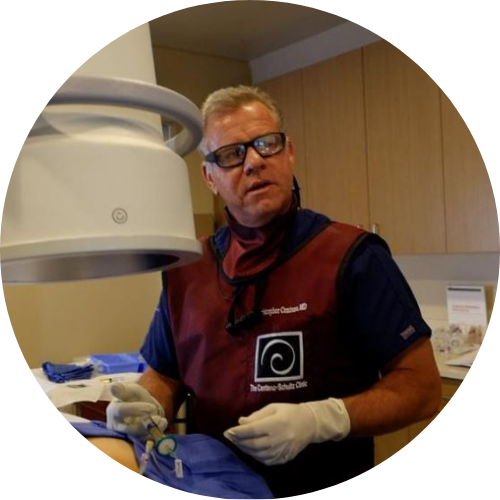
Christopher J. Centeno, MD
Christopher J. Centeno, M.D. is an international expert and specialist in Interventional Orthopedics and the clinical use of bone marrow concentrate in orthopedics.
Dr. Centeno is one of the few physicians in the world with extensive experience in the culture expansion of and clinical use of adult bone marrow concentrate to treat orthopedic injuries. His clinic incorporates a variety of revolutionary pain management techniques to bring its broad patient base relief and results. Dr. Centeno treats patients from all over the US who travel to Colorado to undergo innovative, non-surgical treatments. Dr. Centeno has chaired multiple international research-based conferences. He also maintains an active research-based practice, with multiple publications listed in the US National Library of Medicine. Dr. Centeno has also served as editor-in-chief of a medical research journal dedicated to traumatic injury.
Dr. Centeno trained at the Baylor College of Medicine, Texas Medical Center, and the Institute for Rehabilitation Research. He hails from both Florida and New York and currently resides in Boulder, Colorado with his wife and three children.

John Schultz, MD
John R. Schultz M.D. is a national expert and specialist in Interventional Orthopedics and the clinical use of bone marrow concentrate for orthopedic injuries. He is board certified in Anesthesiology and Pain Medicine and underwent fellowship training in both. Dr. Schultz has extensive experience with same day as well as culture expanded bone marrow concentrate and sees patients at the CSC Broomfield, Colorado Clinic, as well the Regenexx Clinic in Grand Cayman. Dr. Schultz emphasis is on the evaluation and treatment of thoracic and cervical disc, facet, nerve, and ligament injuries including the non-surgical treatment of Craniocervical instability (CCI). Dr. Schultz trained at George Washington School of…
Read more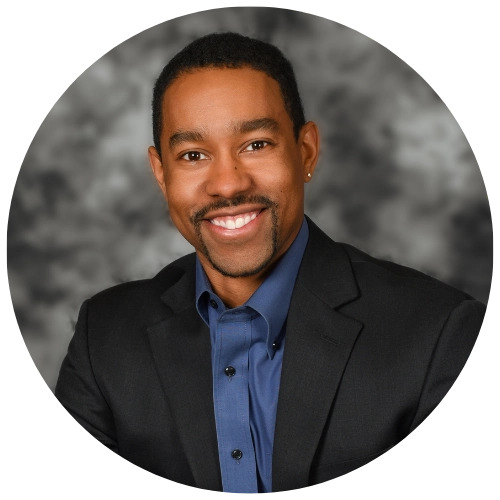
John Pitts, M.D.
Dr. Pitts is originally from Chicago, IL but is a medical graduate of Vanderbilt School of Medicine in Nashville, TN. After Vanderbilt, he completed a residency in Physical Medicine and Rehabilitation (PM&R) at Emory University in Atlanta, GA. The focus of PM&R is the restoration of function and quality of life. In residency, he gained much experience in musculoskeletal medicine, rehabilitation, spine, and sports medicine along with some regenerative medicine. He also gained significant experience in fluoroscopically guided spinal procedures and peripheral injections. However, Dr. Pitts wanted to broaden his skills and treatment options beyond the current typical standards of care.
Read more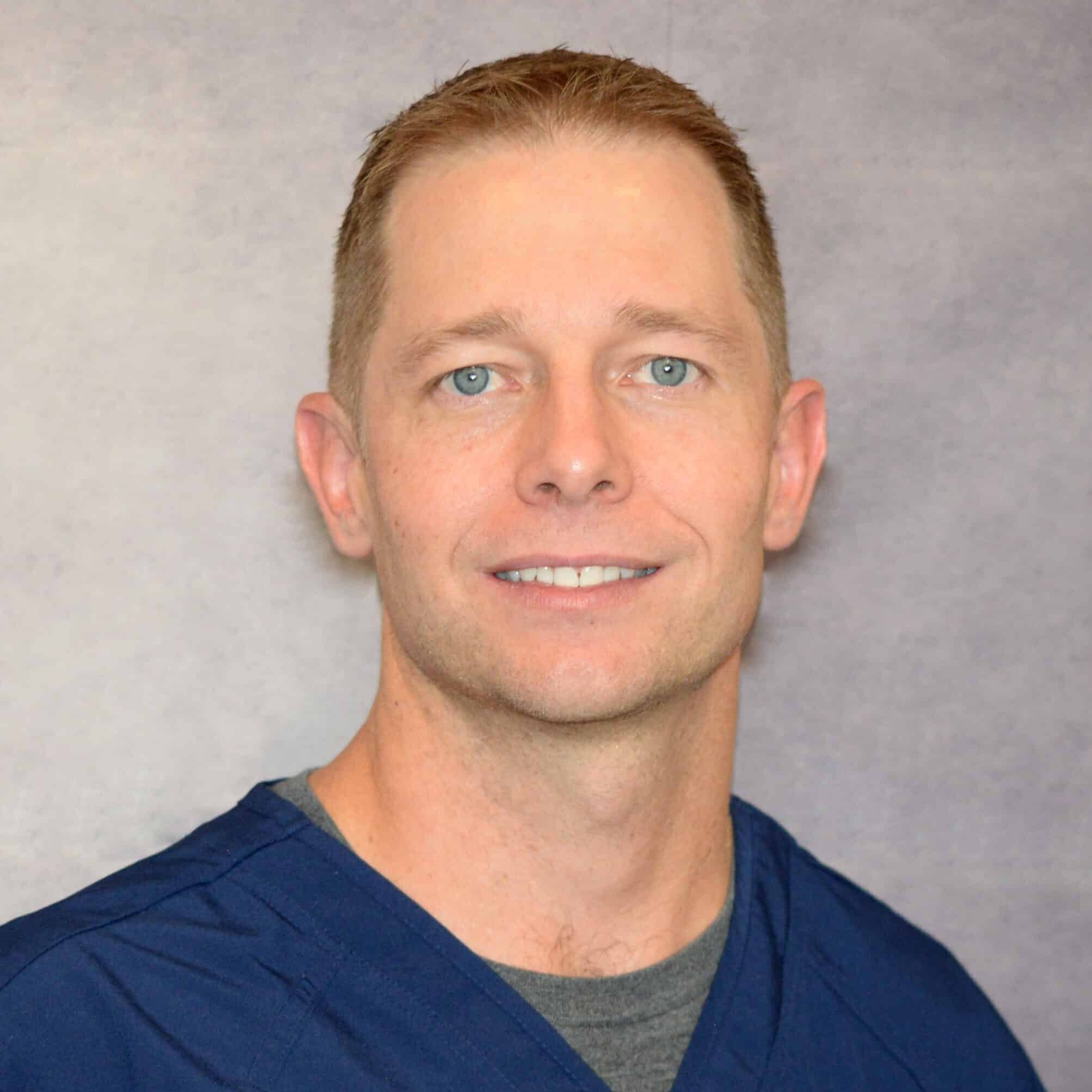
Jason Markle, D.O.
Post-residency, Dr. Markle was selected to the Interventional Orthopedic Fellowship program at the Centeno-Schultz Clinic. During his fellowship, he gained significant experience in the new field of Interventional Orthopedics and regenerative medicine, honing his skills in advanced injection techniques into the spine and joints treating patients with autologous, bone marrow concentrate and platelet solutions. Dr. Markle then accepted a full-time attending physician position at the Centeno-Schultz Clinic, where he both treats patients and trains Interventional Orthopedics fellows. Dr. Markle is an active member of the Interventional Orthopedic Foundation and serves as a course instructor, where he trains physicians from around the world.
Read more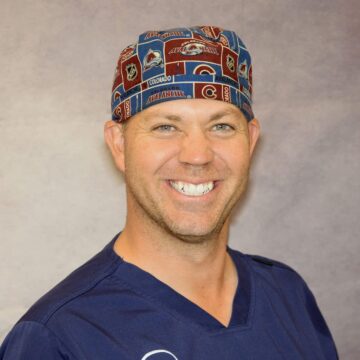
Brandon T. Money, D.O., M.S.
Dr. Money is an Indiana native who now proudly calls Colorado home. He attended medical school at Kansas City University and then returned to Indiana to complete a Physical Medicine and Rehabilitation residency program at Indiana University, where he was trained on non-surgical methods to improve health and function as well as rehabilitative care following trauma, stroke, spinal cord injury, brain injury, etc. Dr. Money has been following the ideology behind Centeno-Schultz Clinic and Regenexx since he was in medical school, as he believed there had to be a better way to care for patients than the status quo. The human body has incredible healing capabilities…
Read moreOther Resources for Cervical Lordosis

The Spine Owner’s Manual: How to Avoid Back Pain & Life-Altering Surgery
This e-book from Dr. Chris Centeno focuses on the spine and how it functions within the human musculoskeletal system and the body as a whole. Everything in our bodies works together like a well-tuned symphony to support our well-being, and a strong spine (including all of its component parts, such as spinal nerves, ligaments, muscles, etc.) is critical to complete health.
Using the Regenexx SANS approach, The Spine Owner’s Manual provides a series of tests and clearly defined exercises that you can do on your own to measure and monitor your own spinal health. These musculoskeletal tests will allow you to monitor where your own body might be struggling to maintain proper stability, articulation, symmetry, and neuromuscular function.
-
Trigeminal Neuralgia: The Truth About The Suicide Disease
Trigeminal neuralgia (TN) is a condition often described as one of the most painful disorders known to humanity. Historically referred to as the “suicide disease,” this label underscores the devastating impact TN can have on an individual’s quality of life. This article delves into the condition’s origins, challenges, and emerging treatments, providing hope for those…
-
What Causes Facial Pain? Common Triggers and Solutions
Facial pain is a complex and often debilitating condition that affects millions of people worldwide. It can arise from various sources, ranging from dental issues to nerve disorders, and can significantly impact daily life. Understanding its causes and treatment options is essential for effective management and relief. Understanding the Anatomic Pathways Related to Pain in…
-
Understanding Trigeminal Neuralgia Symptoms and How to Spot Them
Trigeminal neuralgia is often described as one of the most excruciatingly painful conditions a person can experience. Affecting the trigeminal nerve, which is responsible for transmitting sensory information from the face to the brain, this condition can cause sudden and severe facial pain that disrupts daily life. Understanding the symptoms, risk factors, and potential triggers…
-
8 Golf Stretches For Your Back to Avoid Pain
Golf may look like a low-impact sport to the untrained eye, but seasoned players know that it can take a serious toll on your body—especially your back. Between repetitive swinging, bending, twisting, and walking the course, it’s no surprise that back pain is among the most common complaints among golfers. If not addressed, these issues…
-
Golf Carpal Tunnel Injuries: Know the Facts
Carpal tunnel syndrome (CTS) might not be the first thing that comes to mind when you think of golf injuries, but for many recreational and professional players, it’s a painful reality. The repetitive motions involved in swinging a club, gripping tightly during drives, or even striking the ground with force can lead to inflammation in…
-
Exploring the Long-Term Effects of Post-Concussion Syndrome
Post-concussion syndrome (PCS) (aka persistent post-concussion symptoms) is a condition that often arises after a concussion, which is one type of traumatic brain injury (TBI). It is characterized by symptoms that persist long after the initial injury, leading to significant long-term effects that can impact both physical and mental health. While most people recover from…



